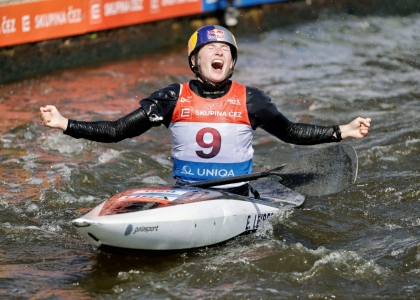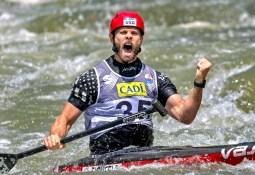The incredible production line that has allowed Germany to pump out K4 1000 Olympic medallists in all but one Games in the past 30 years has had to be recalibrated, but the early signs are that the mission has been a success.
The likely change from a 1000 to a 500 metre race for the Tokyo Olympics has forced all countries back to the drawing board as they try to work on the best possible combination for the new format.
Germany, the K4 1000 gold medallists from Rio, showed in Szeged last weekend it has adapted the quickest to the new format, winning gold in a competitive World Cup final.
The concoction the team came up with is simple; take two pistol-like whippets from a K2 200 boat, in this case the formidable Ronald Rauhe and Max Lemke; add in two work horses from the Rio gold medal boat, Max Rendschmidt and Tom Liebscher, and then just add water…
“It was a good race, but we still have some things to prepare for the Worlds, but it is a good result,” Liebscher said.
“I think in the K2 200 metres all the boats have been getting closer and closer, and I think it will be the same for the K2 500.
“That’s a start, that’s the first race, but there are three years until 2020 so we will see.”
From the outside it might not look all that difficult to work out the best possible combination for a 500 boat. But not all 1000 paddlers are brutally quick, and some sprinters can maybe stretch their stamina to 202 metres with a tailwind.
But the German gold medallists, despite a slightly botched start, seemed to have few problems gelling.
“We have two guys coming from the 1000 to the 500, and two from the 500 to the 1000, so I think it’s a really good mix,” Lemke said.
“The other two have lots of stamina for the final 250, and we can really push the boat really strong for the first 250.”
It’s only the start of an Olympic cycle, and there will be dozens of new combinations trialled in the coming years, including among the Germans.
The new distance has meant a chance in training strategy as well, which can be challenging for paddlers who have spent a life time following certain routines.
“For sure training is different,” Rauhe said.
“Because there’s a lot more speed in the boat, you have to push the boat quite faster. That means you’ve got to do a lot of sprint naturals.
“Our 1000 metre guys are multi-talented, so they are good at 1000 but pretty fast for 250, so it’s a good balance for our boat which is what we need to make it fast.
“Everybody has to see how it works and what sort of skills you need in the boat. That’s why a lot of new faces are here already, it will make it interesting for the next four years, for sure.”
The ICF Canoe Sprint World Cup 3 begins in Belgrade on Friday.
Pic by Balint Vekassy




